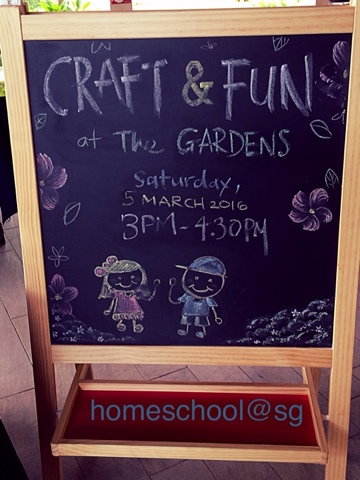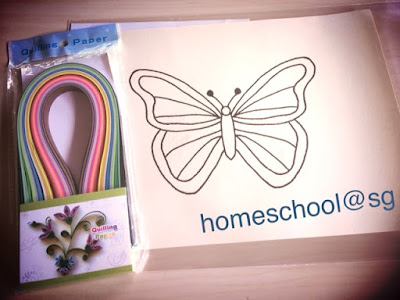I have read about sentence analysis or some might call it, sentence diagramming, a long time back. But at that time, I had no idea how to do it and what was the purpose of it, despite reading about it up teen times.
Recently, I looked it up again because I wanted Sonshine to learn more about sentence structure. I find that our schools don't take enough time to teach the students about proper sentence structures. In fact, our students are made to dive right into writing a story even before they truly know how to compose proper sentences. Hence, many are left to guess or go by their 'feel' when it comes to writing. I am a living product of this education, sometimes I just know a sentence is wrong because, it just 'sounds' wrong. I don't really know why nor can I explain it. And that's why my grammar is so bad.
So I went researching and sentence diagramming appeared on my screen. This time, I studied it thoroughly. Something must have changed in me like maybe I got smarter over time (yah right!), this time, I understood sentence diagramming perfectly. I was blown by it and even had loads of fun learning how to diagram sentences.
That said, while I have finally have the know-how in sentence analysis, I am still not clear what is the true objective of it.
In her book 'Writing with Ease', Susan Wise Bauer believes that to write well, the student needs to know put his ideas into order. She feels that diagramming will help the student in this aspect. There are other benefits of diagramming, raised by others. You can research more here if you like. But of course, there are also the detractors who feel that it is unnecessary.
Well, it did help me to 'see' the relationships of the words and phrases in a sentence better. Also, I do feel that I am more equipped to understand complex sentences now that I know how to diagram sentences.
But what bugs me is that I fail to understand how diagramming can help to improve writing and correct grammar? I still have not figure this out yet at this point. This was the reason why I toiled and wondered if I should teach Sonshine this, because if it doesn't help in writing, then why bother learning?
In the end, I made the decision to teach him for one simple, and probably shallow, reason- because it is fun. I have decided that anything else that comes with it is added bonus. But like I said, I have discover some of the benefits of diagramming and so I do think it is good for one to know this skill.
After that much blabbering, what exactly is sentence diagramming or sentence analysis? It is essentially graphing out a sentence or breaking it down into parts. If you want to know more, you can google for it and many articles will show up to fill you in. It is essentially an American 'thing'. Apparently, the American students in the past were made to learn this but not so much now.
So, I shall now present how one can diagram a sentence using Montessori method. Note I am not following the authentic way but you will get the idea. To do the following you need to have a set of Montessori sentence analysis symbols. You can download this for free here.
First let's take a look at this sentence:
Read the sentence and identify what is the predicate; what is the main action of this statement?
You should have picked out 'read'. 'Read' being the main action is called the predicate (of this sentence).
Place black arrow indicating 'Who is that? What is that?' on the left side of the predicate. Ask the child, who or what is doing this action?
It is 'I' who is executing the action 'read'. Hence 'I' makes the subject of this statement.
Next, place the black arrow 'Whom? what?' on the right side of the predicate. Ask the child what is the subject reading?
The subject is reading 'a book' and that makes the direct object of the sentence.
By now, the chart should look like this.
The phrase 'at home' is the only one left uncharted. Take the orange arrow 'where?' and place it under the predicate. Ask the child 'where is the subject reading the book?'
The answer is 'at home' which is the preposition object of the sentence.
Your final chart should look like this.
Here's another example:
The final diagram of the second sentence.
These sentences are fairly simple and easier to chart. It gets more complicated and fun with more complex sentences (like complex or complex- compound sentences) and more challenging if we further diagram the words by adjectives, prepositions, articles etc. What I showed earlier is a fairly simple version of it.
You may be surprise to know that I didn't do the above presentation to my son. In fact, I taught him another diagramming method.
If you google 'sentence diagram' you will see images like this:
And that was how I taught my son. This site gave the best and most detailed explanation on how to diagram sentences. I even picked up grammar terms like predictive nominative and predictive adjective, auxiliary modifiers etc - I never knew!
I only started to give my son a quick15 minutes lesson on this. I don't plan for him to be an expert in this but I do want him to be familiar with this as I am slowly recognizing how it can be useful in helping the write sort out his ideas in order as Susan Wise Bauer has said. It does help the writer to structure the sentences properly.
Phew, this is probably my longest ever. But I sure had a lot of fun reading; learning and sharing about this!










